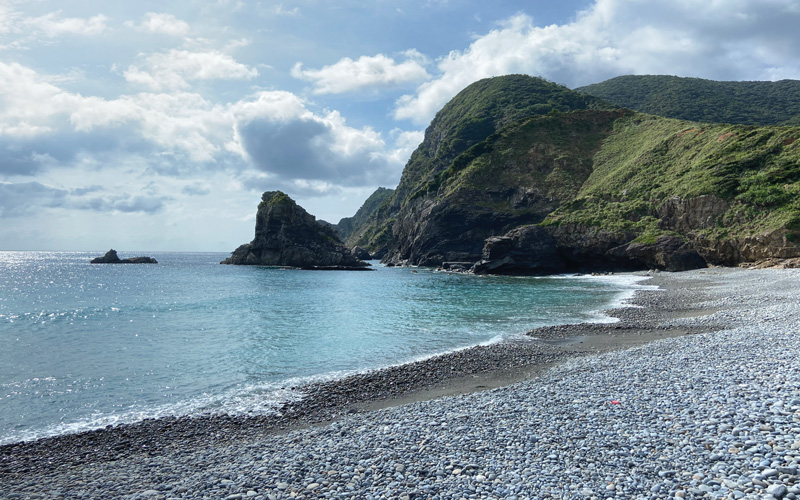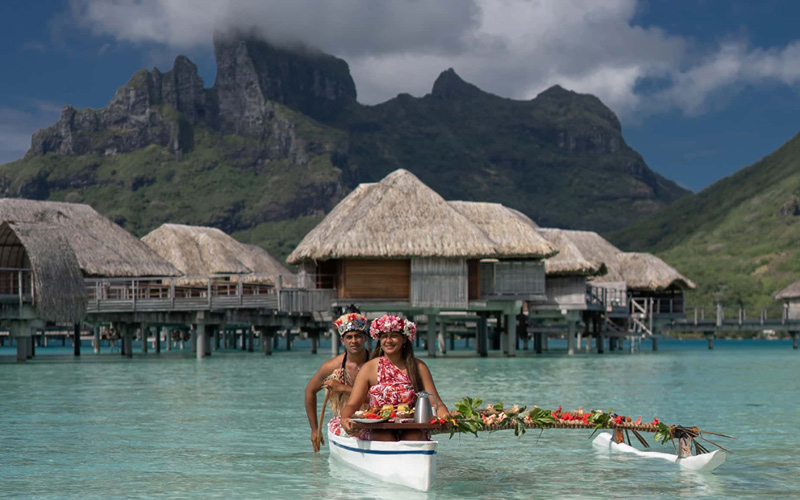Amami Island Japan’s Undiscovered Natural Island Paradise
Half-way between Kyushu – the southernmost of Japan’s four main islands – and Okinawa,

Photo By Yoshi Ohkuma
lies the Amami Archipelago (https://tinyurl.com/25a8ymyb), a relatively off-the-radar group of 13 islands of which only eight are inhabited. With clear blue waters, subtropical climate, and zero crowds, this place is an incredibly relaxing destination that is also rich in its own unique Japanese island culture. As my guide/friend, Yoshi, put it, “It’s like Okinawa 25 years ago.”
With all this going for it, Amami is even further distinguished. In July 2021, Amami Oshima and Toku-no-Shima – the two largest islands in the chain, were designated as UNESCO Natural World Heritage Sites (https://whc.unesco.org/en/list/1574/) for their endemic and rare flora and fauna. These include the mangrove jungles and large ancient ferns and the dark-furred Ryukyu Rabbit – often called the “Amami Black Rabbit” – the only remnant of this lagomorph that once hopped about the Asian mainland. It’s now extinct everywhere but on Amami. Amami is also recognized as a birding Utopia, as the “Amami Thrush” and “Lidth’s Jay” are not found anywhere else.
My Personal Amami Island Paradise Tour
As of October 11, 2022, Americans are once again allowed to freely enter Japan without a visa for up to 90 days. However, I traveled to Japan this past August on a business visa. I took an approximately 1-hour flight between Kagoshima City and Amami (JAL or Skymark) and drove around Amami Oshima for four days with two Japanese friends. Administratively, Amami belongs to Kagoshima Prefecture (https://tinyurl.com/2hpwa7tp), despite the nearly 242-mile distance.
On our “Paradise Tour,” we saw quiet rocky shores, white sand beaches, azure water with coral reefs, heart-shaped naturally formed water pools, and forested mountains, including Yuwandake, rising 694 meters above sea level, offering a spectacular panoramic, multi-island view. We trekked down sloping treelined paths to the oceanfront that meandered past waterfalls, and we kayaked through mangrove-wrapped estuaries toward calm, open water. The approximately 15 people in our kayaking group was the largest out-in-nature human gathering we witnessed. Even though it was Japan’s summer holiday, because of Covid fears, few Honshu and Kyushu-based Japanese took flights or ferries; so, we never saw more than about four people on a beach at a time. In fact, on one beach, we were transported back in time by a lone woman playing folk songs on a shamisen – a three-stringed, traditional instrument, where the body or dō is usually made of cat skin.
Amami Cuisine
I never ate such fresh sashimi in my life! We drove to the dock where they bring in the daily catch. We literally saw the fishing boat right there, and just steps away – in what looked like a boat garage – our friend and fish monger, Masaki, swiftly filleted the just-arrived small black tuna called Shibi right in front of us. But even more amazing was the price! Enough sashimi for a family of four was 1,000 yen, which is about $6.70 at the current exchange rate. This could easily be $30 in Tokyo and $60 in New York!
Twice for lunch I savored a local specialty chicken and rice soup called Keihan with shredded chicken, white rice, thinly sliced ginger, green onion, shiitake mushrooms, cooked egg, and then dried seaweed sprinkled on top. Chicken broth is poured over the mixture until all ingredients are submerged as a soup. I even grabbed some pre-made Keihan pouches (about $5) at the souvenir shop to heat up at home and give as gifts.
Shochu
In southern Japan, the widely produced alcoholic beverage is not brewed saké but distilled shochu. However, Amami is the only place in Japan producing kokuto shochu, using locally grown sugar cane combined with black koji rice mold and hard water from the coral layers. I had the good fortune to meet Serena Nishihira, the 34-year-old, fourth generation “toji” (distiller) at the nearly 95-year-old Nishihira Shuzo (distillery) in Amami. Serena is not only unique as a female toji, but she is also a percussionist. In fact, it seemed that all her relatives were musically inclined. At our farewell dinner at restaurant Haru, in downtown Amami City (pop ~ 43,000), we were joined by her cousin Marina Hirata, a nationally recognized contemporary shamise player, whose posters and CDs (https://tinyurl.com/bdcsn2mh) were at the airport!
Museums, Art, Handicrafts, Festivals
In Amami Park, we visited the Tanaka Isson Memorial Museum (http://amamipark.com/isson/), displaying more than 80 works of Amami’s nature painter Isson Tanaka. While there, we also saw a vibrant photographic exhibition of local endangered species.
Amami’s most famous handicraft is Oshima Tsumugi silk fabric, with a 1300-year history. Notable for its brown, beige, ocher, and red tones, it is created by repeatedly submerging the fabric into mud fields. For clothing, it is durable, breathable, and comfortable, but these days, they make goods from purses to glassware – by placing the fabric in between two pieces of glass. Seventh generation artisan, Shoji Hajime (https://hajime
shoji.com/hajime-story/english/), whose shop and studio are open by appointment, even created car foot mats for a special edition Ferrari showroom vehicle!
I just missed Amami’s Summer Festival, which takes place the first weekend in August. The exciting event includes art, food, island songs, fireworks, boat races, traditional “Hachigatsu Odori” dancing, and more. It’s a great time to visit this island paradise!
More information on Amami Island: https://www.exploreamami.com




